

Ben Zachariah
Move over, Patrol: New-era Ford Maverick SUV imagined
5 Hours Ago
The Lexus UX200 F Sport is up against serious competition from the Europeans. Is that a reason to ignore what is arguably the most luxurious car in its class?
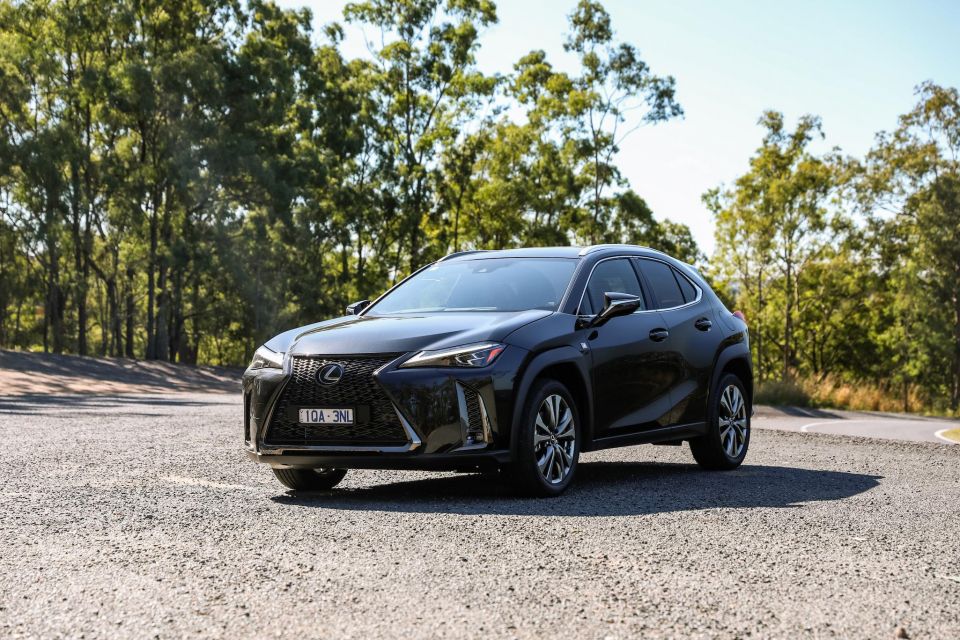
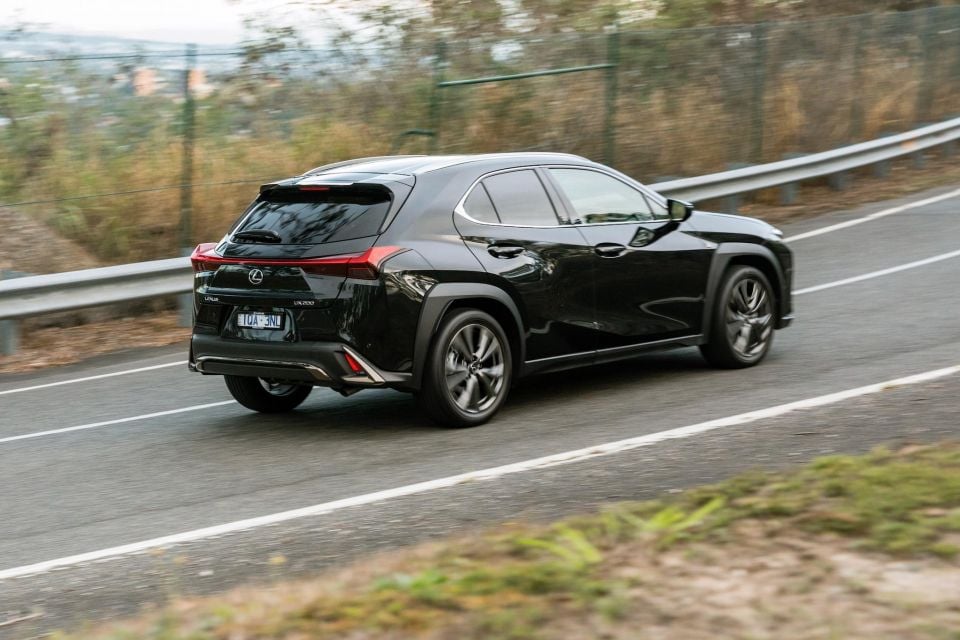

Publisher
New from
$45,050
excl. on-roads

Publisher
New from
$45,050
excl. on-roads


Publisher
New from
$45,050
excl. on-roads

Publisher
New from
$45,050
excl. on-roads
Quickly see how this car stacks up against its competition. Select any benchmark to see more details.
Where expert car reviews meet expert car buying – CarExpert gives you trusted advice, personalised service and real savings on your next new car.
The Lexus UX200 is competing in a segment long dominated by the Europeans. Is that reason enough to ignore what is arguably the most luxurious car in its class?
Lexus is very late to the party with its small SUV, the UX200 and its hybrid version, the UX250h. The small Lexus faces some seriously strong competition from the Audi Q2 and Q3, as well as class leaders such as the Volvo XC40.
That’s not to ignore the BMW X1 and Mercedes-Benz GLA (all-new model arriving soon), either.

Given the plethora of choice in the segment, why pick the Lexus over its European rivals? We got behind the wheel of a Lexus UX200 F Sport to find out.
The Lexus UX range has three trim levels and three different drivetrain configurations, with the petrol-only UX200 not available with all-wheel drive, making it an eight variant range.
The line-up starts at $44,450 before on-road costs for the base UX200 Luxury front-wheel drive and stretches all the way to the all-wheel drive version of the hybrid UX250h F Sport for $61,450 before on-road costs.
All prices exclude on-road costs
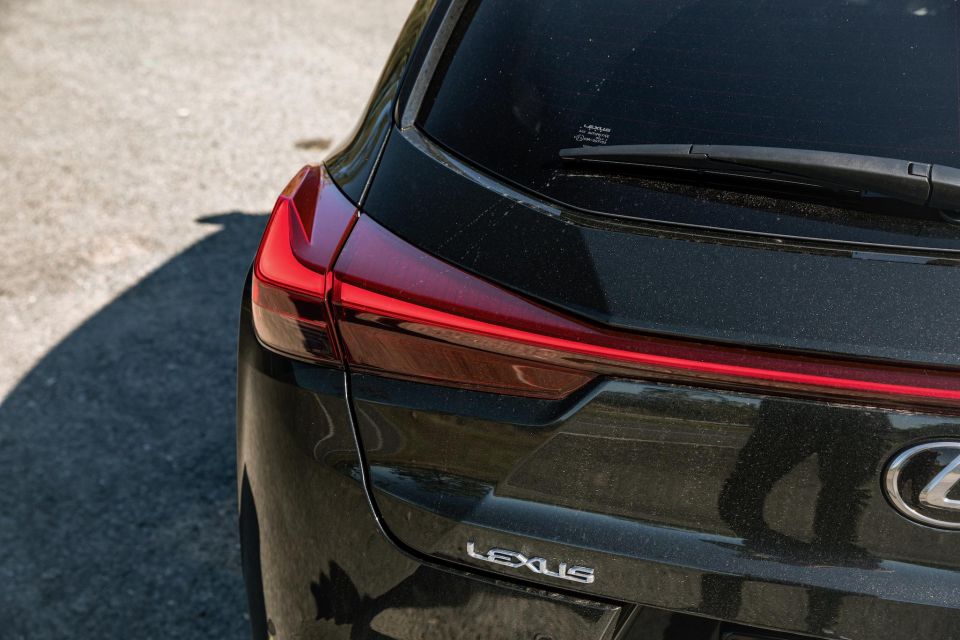
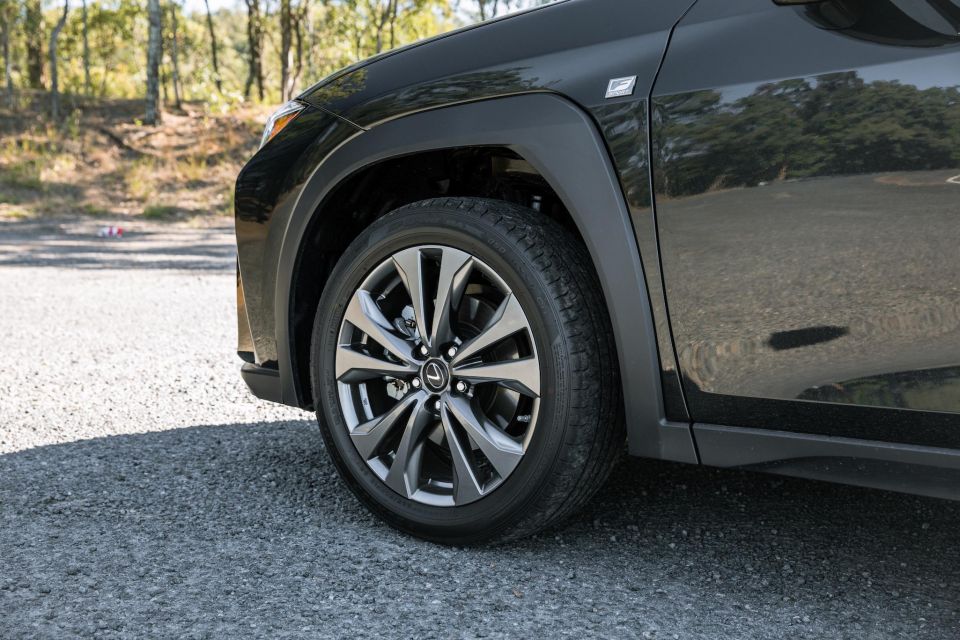
In typical Lexus fashion there aren’t a huge number of options, though premium paint is expensive at $1500, which is pretty much mandatory spend for any of the nicer colours on offer.
Additionally, Luxury models are best had with the ‘Enhancement Pack’ which will set you back $1550, adding a powered tailgate, wireless phone charger, alloy scuff plates, headlamp washers, rear privacy glass, plus cornering lamps.
We feel these features should really be standard even on the base car to be considered ‘luxury’, especially when Lexus prides itself on offering an option-free experience. If you want the moonroof, add another $2500.

F Sport models come with those features standard (bar the moonroof), but you’ll need to fork out an additional $5600 to get the 13-speaker Mark Levinson audio system, a head-up display, 360-degree cameras and smart key card, as well as the moonroof as part of ‘Enhancement Pack 2’.
As far as we can tell, there is no way to get these features on F Sport models without the moonroof, which on its own forms ‘Enhancement Pack 1’ for $2500.
The Sports Luxury variants get all the features already mentioned except for the moonroof, head-up display and smart key card, which can be had in a $3500 ‘Enhancement Pack’.
Buy your new car without the stress. It's fast, simple and completely free.

Great service from Travis and team, second time I have used this business would not hesitate to recommend them to anyone
Craig C.
Purchased a Ford Ranger in Sunshine Coast, QLD
CarExpert helped Craig save thousands on his Ford Ranger, now let us save you on your next new car.
Find a dealDespite the available Enhancement Packs, Lexus offers a great deal of standard equipment on the UX200 F Sport.
Unlike some of its European rivals, Lexus has not compromised on safety and offers the latest version of its Safety Sense driver assist suite as standard across the range.
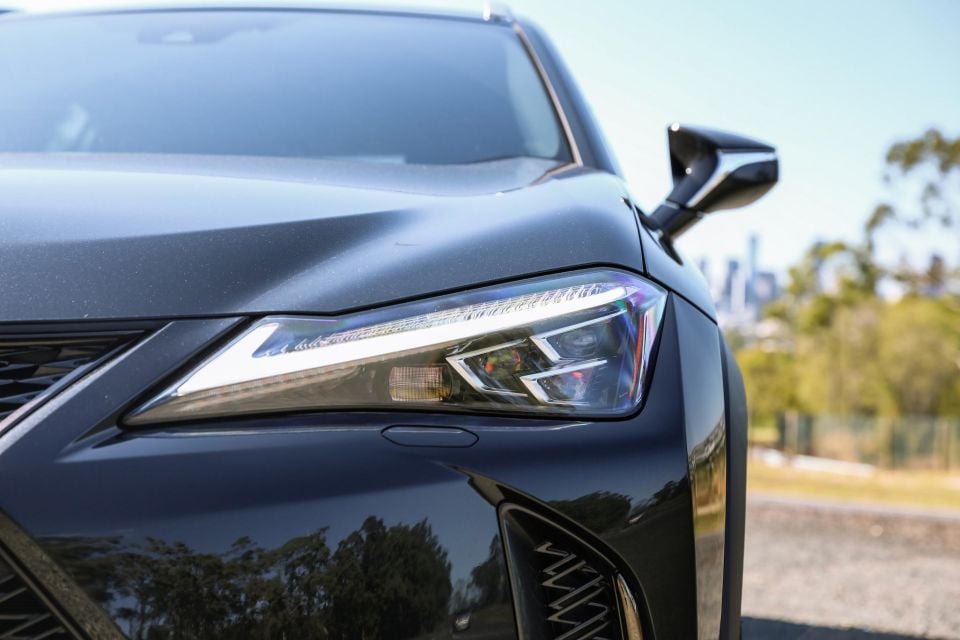
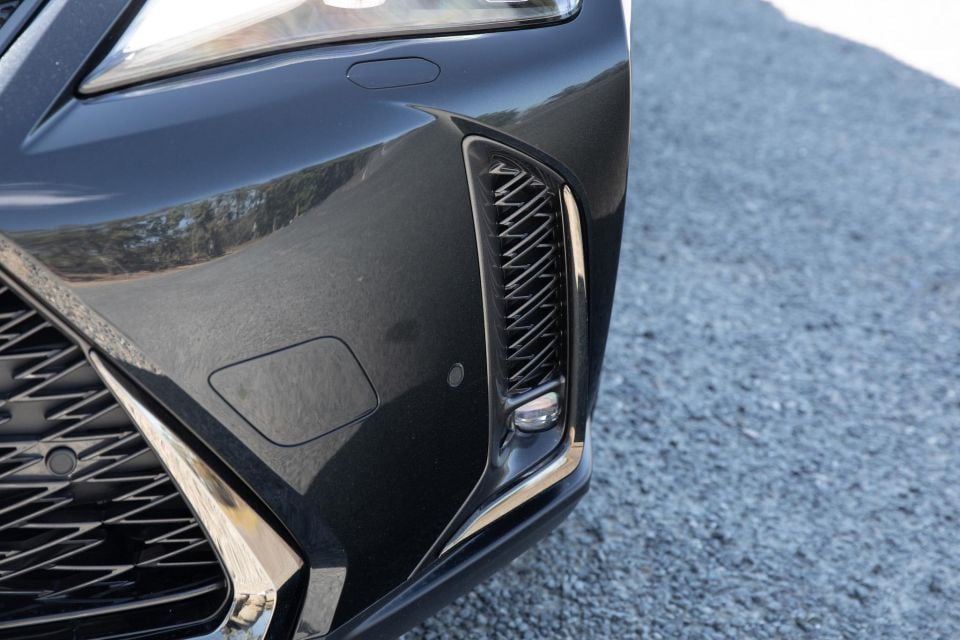
Apart from all the safety features, the base Luxury comes with front and rear parking sensors, a reversing camera, 17-inch alloy wheels (215/60R17 96H Bridgestone tyres), roof rails, and bi-LED headlights with LED fog- and tail lights on the outside.
Inside, there are eight-way power-adjustable faux-leather seats, and a pretty decent 10.3-inch infotainment display that strangely still features a CD/DVD player in case you’ve just woken up from a two-decade coma. You also get a 7.0-inch digital instrument cluster.
Step up to the Sports Luxury and you get everything available in the optional Enhancement Pack for the Luxury listed above, plus upgraded 18-inch wheels (225/50RF18 95V Dunlop run-flat tyres), real leather seats with heating and cooling, a 13-speaker Mark Levinson audio system, and a more sophisticated tri-beam LED headlight system with adaptive high beam incorporating restyled LED front indicators. There’s also a 360-degree camera system.
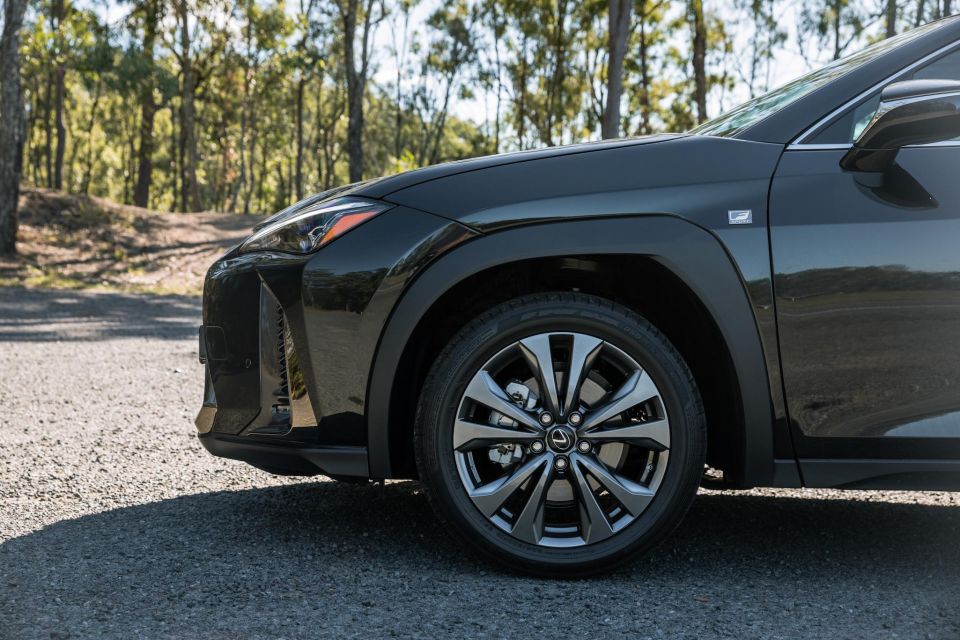
The F Sport misses out on the sound system and the surround cameras standard in the Sports Luxury, but gains adaptive sports suspension, active sound control (fake engine noise pumped through the speakers), F Sport-specific front and rear bumpers, an F Sport grille and badging, along with 18-inch alloy wheels.
On the inside there are pretty F Sport seats that in our test car really stood out – you can have them in white, black or red, but we would definitely recommend the red. They compliment the sportier shift lever, steering wheel, pedals and paddle shifters. The instrument cluster also has a larger 8.0-inch display.
The UX scored the maximum five-star ANCAP rating in late 2018 and scored well in adult occupant protection (96 per cent), child occupant protection (88 per cent), vulnerable road user protection (82 per cent), and safety assist (83 per cent).
Lexus offers its latest suite of Safety Sense+ systems which include autonomous emergency braking that sees pedestrians and cyclists, radar cruise control (all speeds), traffic sign recognition, auto high-beam, blind-spot monitoring, parking support alert, and rear cross-traffic alert.
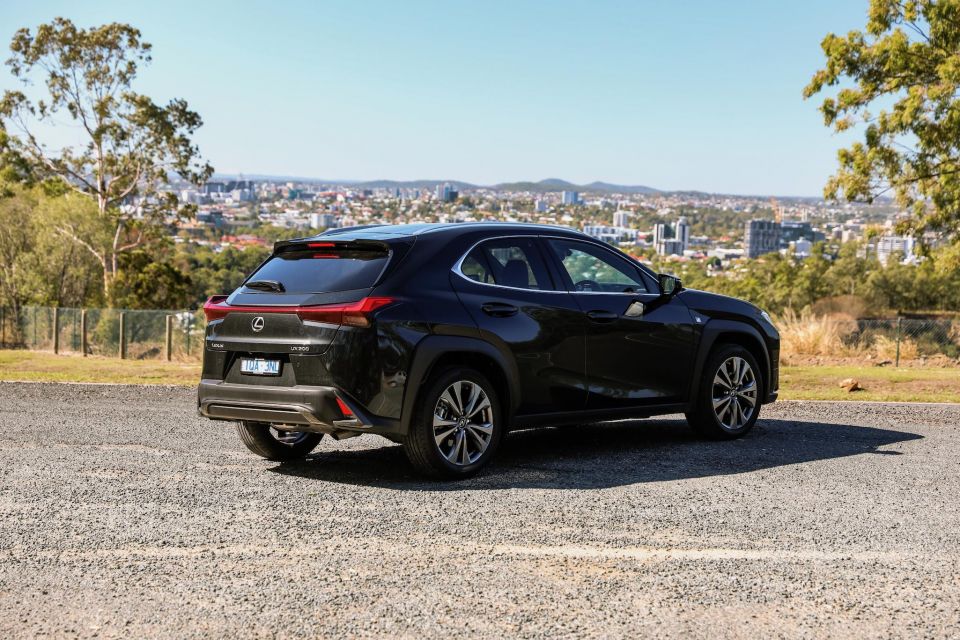
We felt the steering assistance from the lane-keeping system wasn’t on par with what’s on offer from the Germans and didn’t work for us in all conditions. The assistance provided also wasn’t as smooth and reassuring as some competitors.
From a passive safety perspective there are eight airbags: dual frontal, side chest-protecting, side head-protecting (curtains) and knee airbags for the driver and passenger as standard, plus all the traction and stability control systems you would expect.
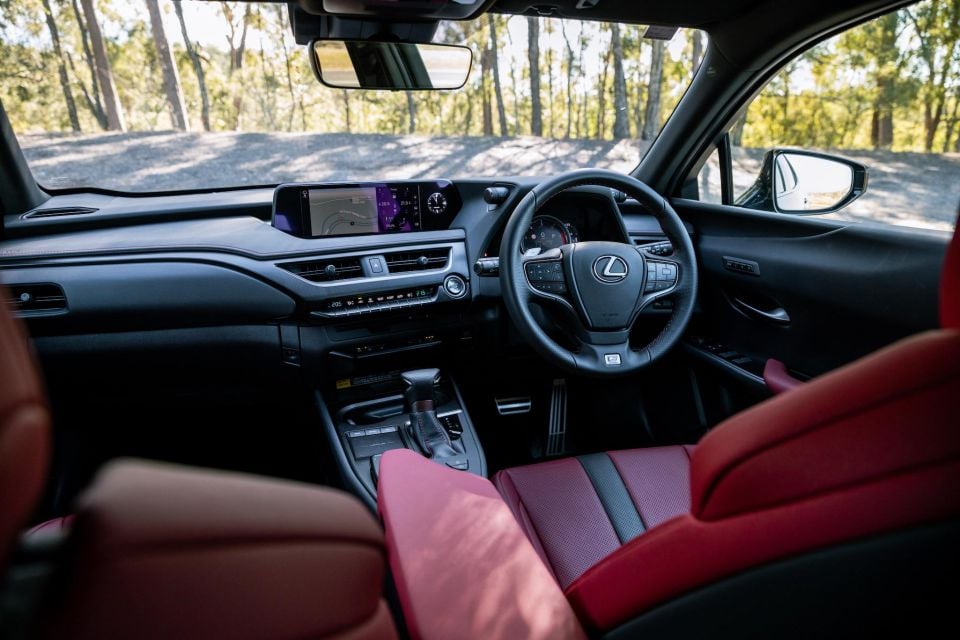
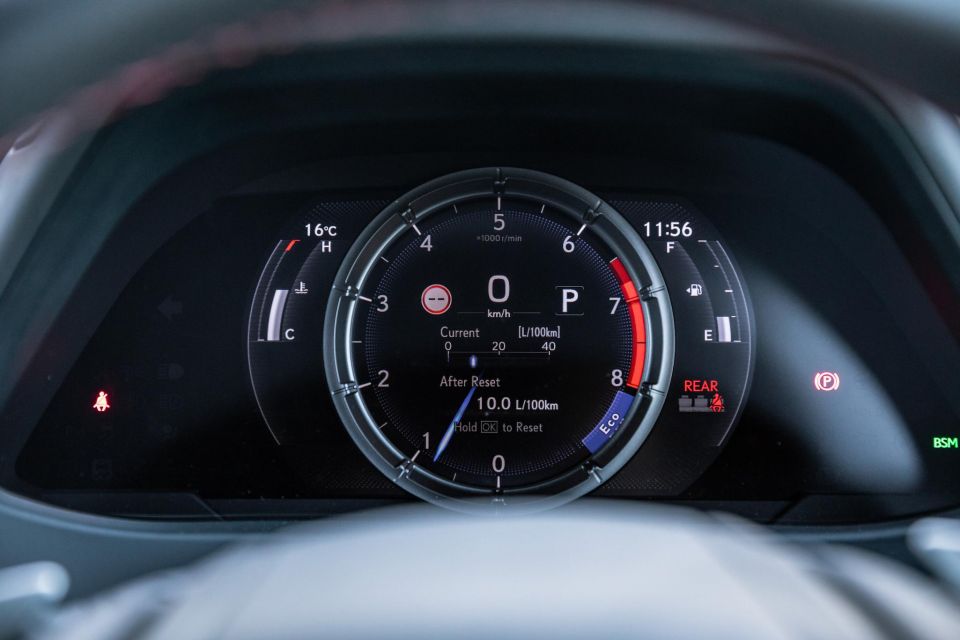
In terms of fit and finish and cabin ambience, the UX is genuinely excellent. This Lexus is more like a Range Rover in terms of its tactile sensation than anything else in the segment.
Lexus is the master of creating high-quality interiors that feel as good as they look. While BMW, Mercedes-Benz and Audi tend to have better technology in their cars, none can match the Lexus’s build quality and tactility, such as the softness of the leather on the F Sport’s beautiful red seats.
There is a lot to be said about what defines luxury. If it’s the old-school sensation of being in a seat that could be sold for $5000 at a high-end furniture store the Lexus wins everyday. But if it’s having the latest and greatest technology behind the wheel, Lexus falls pretty far behind.

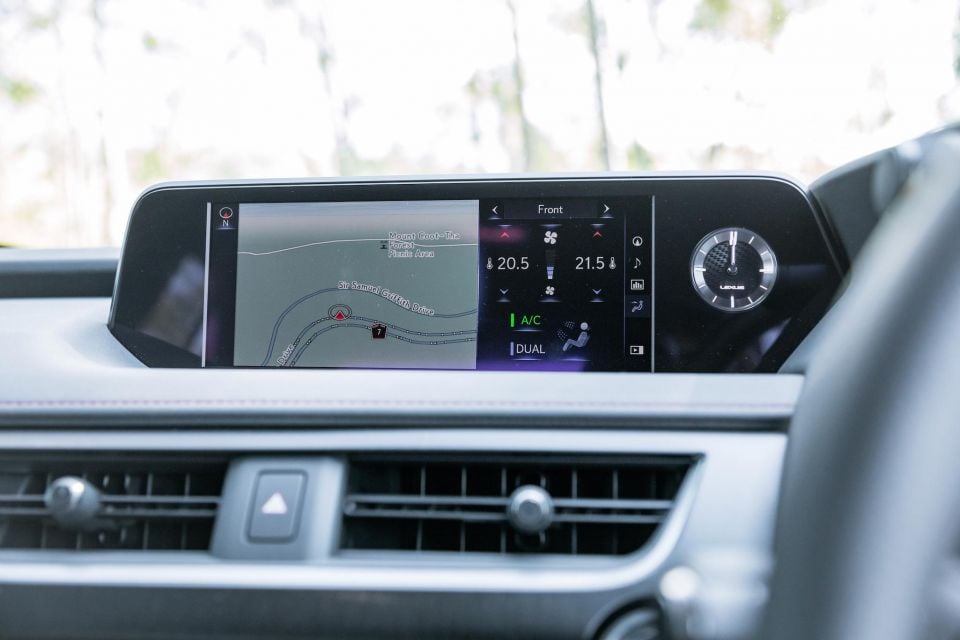
It’s pretty disappointing given the screens employed in the UX are super crisp, but the software driving the system feels like something from the Atari generation. It’s ironic; in software design terms the abbreviation ‘UX’ stands for ‘user experience’, and the Lexus UX has a poor software UX.
The super-sensitive trackpad is utterly frustrating to use and adds unnecessary stress to what is otherwise such a calming, luxurious cabin. At least you can switch to Apple CarPlay (there is no wireless CarPlay despite the wireless phone charger, even though you can now get that in a Kia Rio) and forget about the inbuilt system should you prefer.
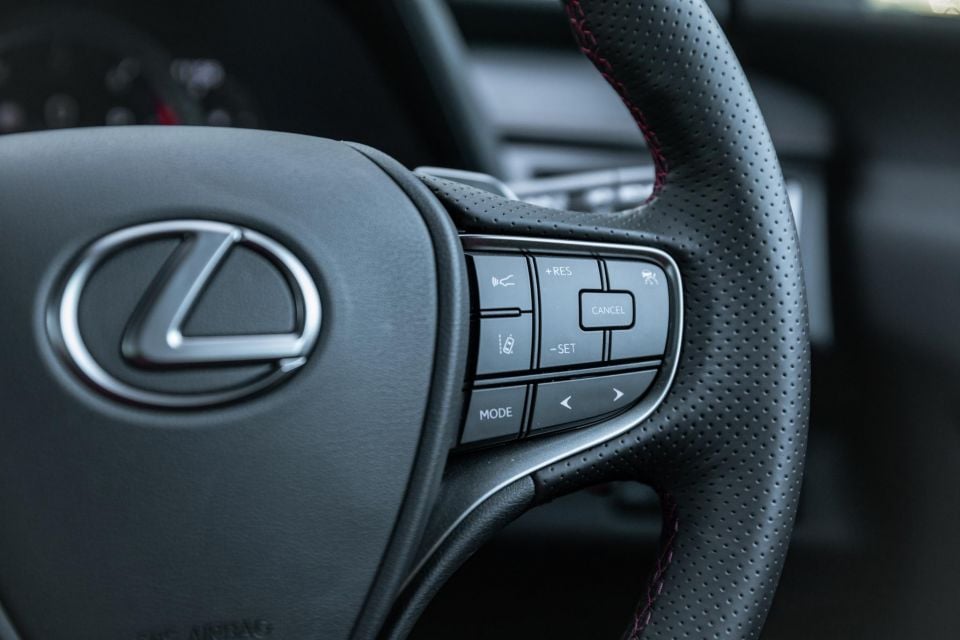
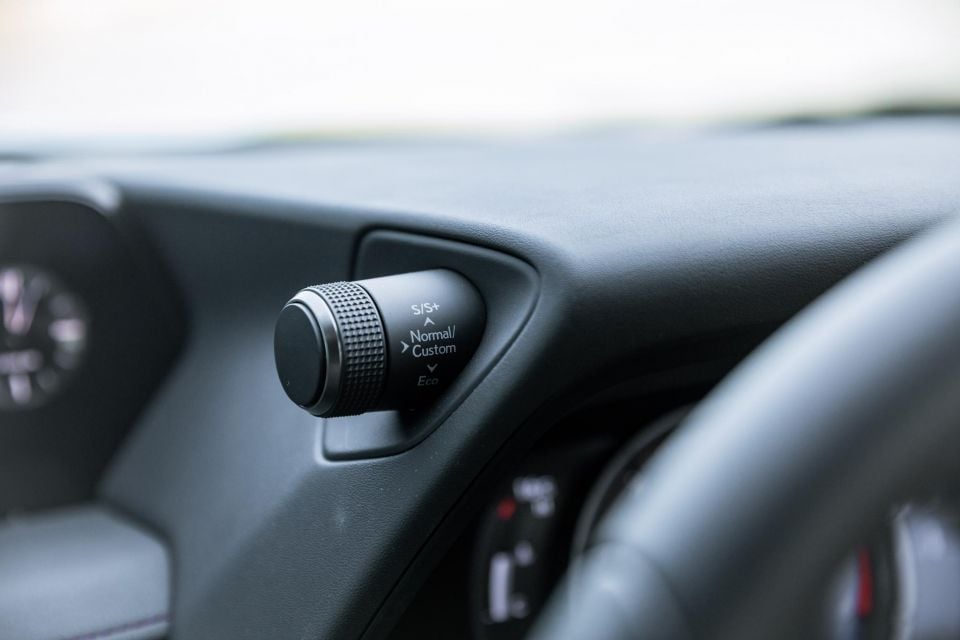
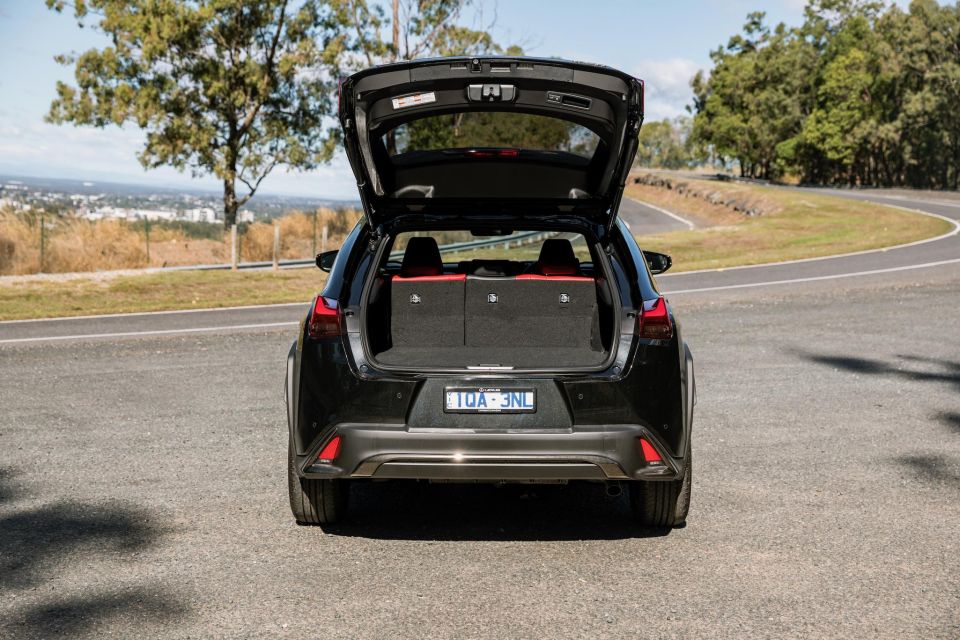
Apart from the comfortable, gorgeous seats in the front, second-row passengers may suffer from a lack of head- and legroom. This tester measures 180cm, and that’s about as tall as you’d want to be to fit in the back seat.
This is really a four-seater, with the fifth perched on a skinny middle seat. The boot is reasonable in size (371L) and will definitely fit the week’s groceries, but don’t plan too many trips to Ikea.
Additionally, little things like some of the buttons (seat heating and cooling) could be a little more refined to go along with the super modern brushed silver look on the air-con controls.


Overall though, if you value the sense of luxury and sensation of supple soft leather as you climb aboard, you won’t find another car in this segment that can match what Lexus offers in terms of fit and finish.
If you value the latest and greatest in technology, you’ll quickly realise what the Germans offer is a generation or two ahead.
The UX200 makes do with a 2.0-litre naturally-aspirated four-cylinder petrol engine pumps out a reasonable 126kW of power and 205Nm of torque.
Lexus claims this is equivalent to European competitors using smaller turbo engines. By comparison, the four-cylinder 1.4-litre turbo in the Audi Q2 35 TFSI makes 110kW and 250Nm of torque, so there is merit to that claim.
Nonetheless, the main downside to the UX200 is the continuously variable transmission (CVT). Unlike the Audi and other German competitors which use quick-shifting dual-clutch transmissions, the CVT in the Lexus is a let down.
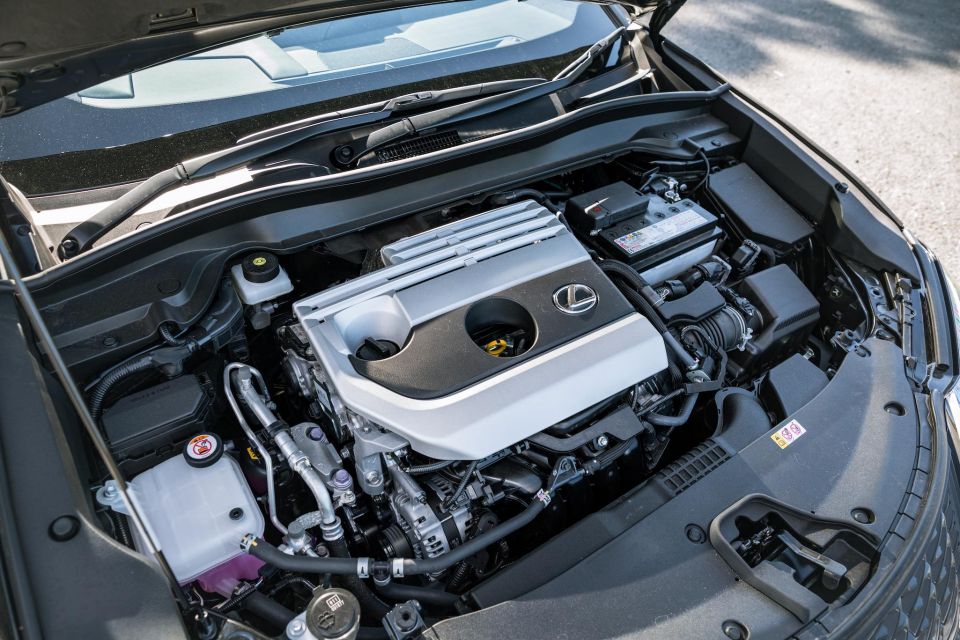
It takes the UX200 a leisurely 9.2 seconds to get from 0-100km/h, while the Audi Q2 with a less powerful engine does the same dash in 8.5 seconds.
The hybrid UX250h versions also use a 2.0-litre petrol engine but gain an 80kW/202Nm electric motor and old-school nickel-metal-hydride (NiMH) battery. Peak power jumps to 131kW, and the 100km/h sprint time drops to 8.5 seconds.
Lexus claims a fuel economy figure of 5.8 litres per 100km for the UX200, but realistically you’re looking in the mid- to high-sixes. The hybrid brings that down to a claimed 4.5L/100km, which may actually be achievable if you spend a lot of time in town but unlikely during regular highway commutes.

The answer to that question really depends on what you’re after. If you want a supple and supportive ride that will leave you feeling relaxed, the UX200 with adaptive suspension (only in the F Sport) is the way to go.
If you want to have a little bit of fun on the odd occasion going up a mountainous road or just even around some basic corners merging onto an arterial, the UX will lean and feel a little too soft even in its sportiest setting.
The steering has a bit of dead feel to it as well, meaning there is next to no feedback on initial turn-in, but we are talking about a city-friendly SUV here.
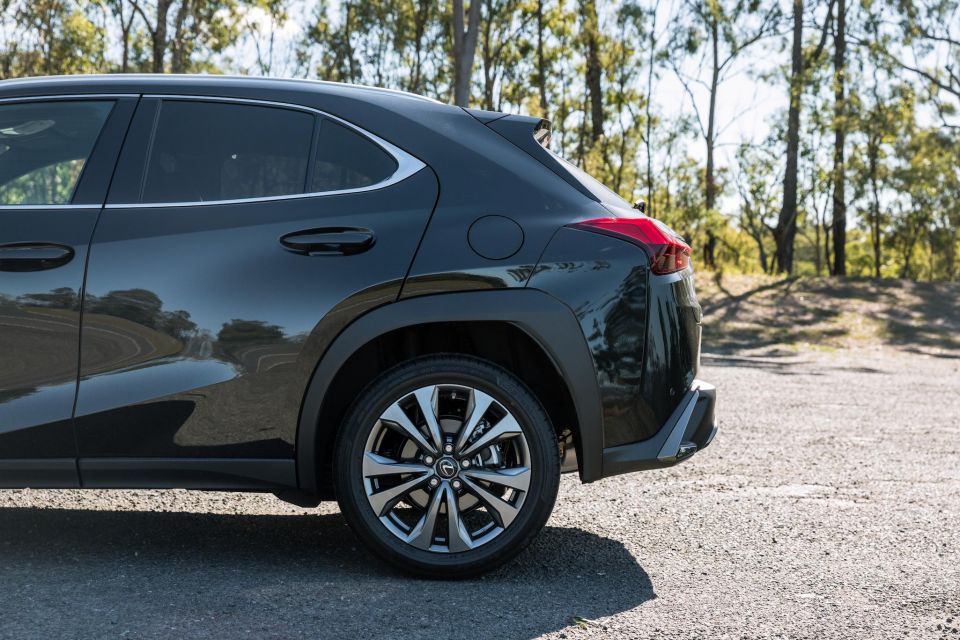
Where expert car reviews meet expert car buying – CarExpert gives you trusted advice, personalised service and real savings on your next new car.
Even so, its competitors feel a lot more dynamically engaging. It’s not so much that the UX is incapable of going around the twisty stuff at a similar speed, it’s more how it feels doing it – and to put that frankly, the UX simply doesn’t feel as confident in the process.
In saying all that, the UX200 rides really well around town and if you’re not too heavy with the right foot, also reasonably powered. If you’re coming out of a turbocharged European competitor, you will definitely miss that sensation of being pushed back into your seat.
The transmission also saps the life out of what may otherwise be a pretty reasonable package. We also found the noise of the gearbox to be a tad annoying when you’re trying to get up a hill or otherwise putting a strain on the engine.
Overall though the UX200, taken for its application as a city-friendly small luxury SUV, drives exactly as it should.
Lexus offers a three-year fixed-price service plan for all UX models at a capped $495 with intervals every 12 months or 15,000km.
Nonetheless, Lexus continues to offer only a four-year warranty where the likes of Mercedes-Benz and Volvo are now offering a five-year warranty.
The main issue we take with the UX is pretty much what we take with any other Lexus. The Japanese luxury brand is doing the right thing by all its customers by not discounting (much) at the point of sale. That’s all well and good, but the problem is that the Europeans do.
Walk into an Audi, Volvo, and BMW dealership and prices start to tumble if you haggle (Mercedes-Benz dealers are going to a model of fixed-priced soon as well, but for now, discounting is the game).
That makes the Lexus UX’s price higher than it seems, because while the Europeans may seem more expensive in the brochure, they can be had for the same or less than what Lexus offers.
Nonetheless, the Lexus UX is a fantastic choice in this super-competitive segment. In terms of its general build quality, particularly in the cabin, it really showcases a sense of luxury that is unrivalled by its competitors.
It lacks the dynamic backbone of sportier options, though, and if it could just catch up with the likes of Mercedes-Benz, Audi and Volvo in the infotainment department, it would be a no-brainer for most buyers.
Where expert car reviews meet expert car buying – CarExpert gives you trusted advice, personalised service and real savings on your next new car.
Alborz Fallah is a CarExpert co-founder and industry leader shaping digital automotive media with a unique mix of tech and car expertise.


Ben Zachariah
5 Hours Ago


Damion Smy
6 Hours Ago
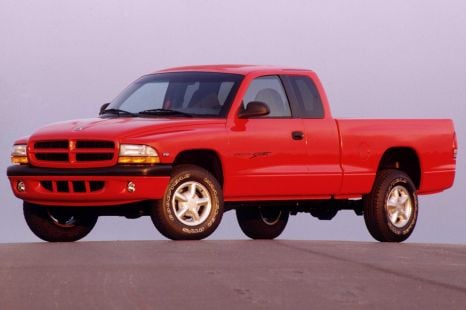

Derek Fung
6 Hours Ago


Ben Zachariah
7 Hours Ago
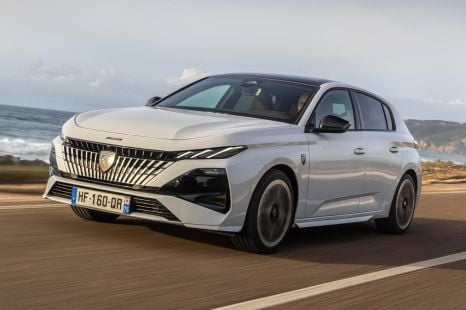

Matt Robinson
13 Hours Ago
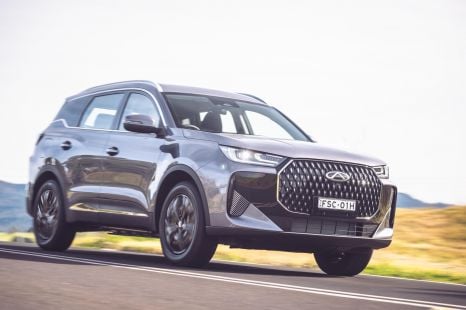

CarExpert.com.au
22 Hours Ago